Stuttgart pack, c.1430
The luxury, hand-painted Stuttgart Cards (Stuttgarter Kartenspiel) dated c.1430, with suits of ducks, falcons, stags and hounds.
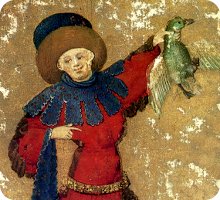
The Painted Stuttgart cards, c.1430
Ducks, falcons, stags and hounds... luxury playing cards from southwest Germany, probably for fashionable esteem. Around 1400 the sport of hunting was part of life at court, as depicted in books and playing cards of the day.
Originally in the collections of the dukes of Bavaria, these are considered amongst the earliest surviving sets of playing cards. The cards are made from pasteboard consisting of up to six sheets of paper glued together, over which a layer of gesso was applied on the front side. Outlines of the designs were scratched into the surface, while some details were drawn with pen and ink. The entire surface was gilded and the designs were then painted over the gold using a variety of colours and metal applications. The backs are painted dark red. A study of the watermarks in the paper revealed that it came from the Ravensburg paper mill and was made between 1427 and 1431.
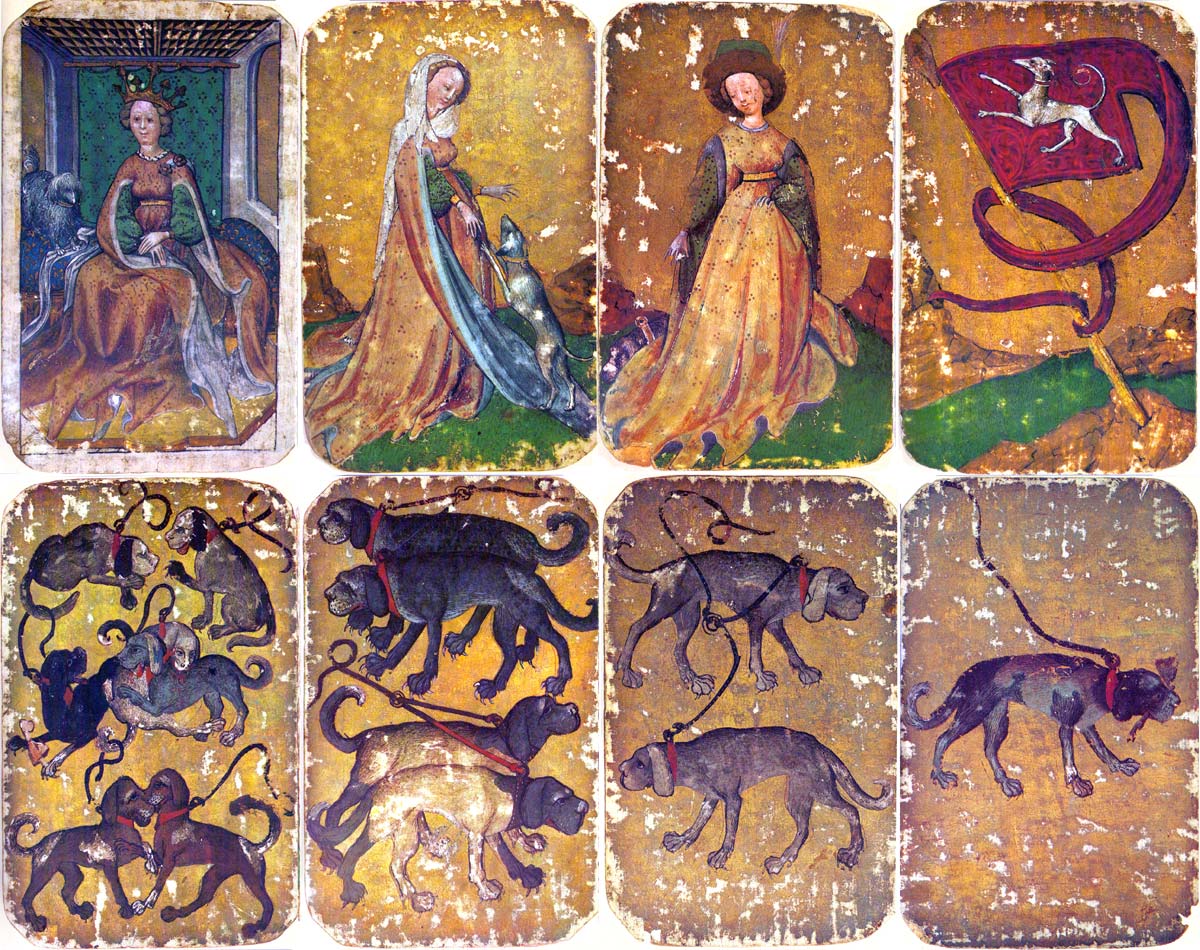
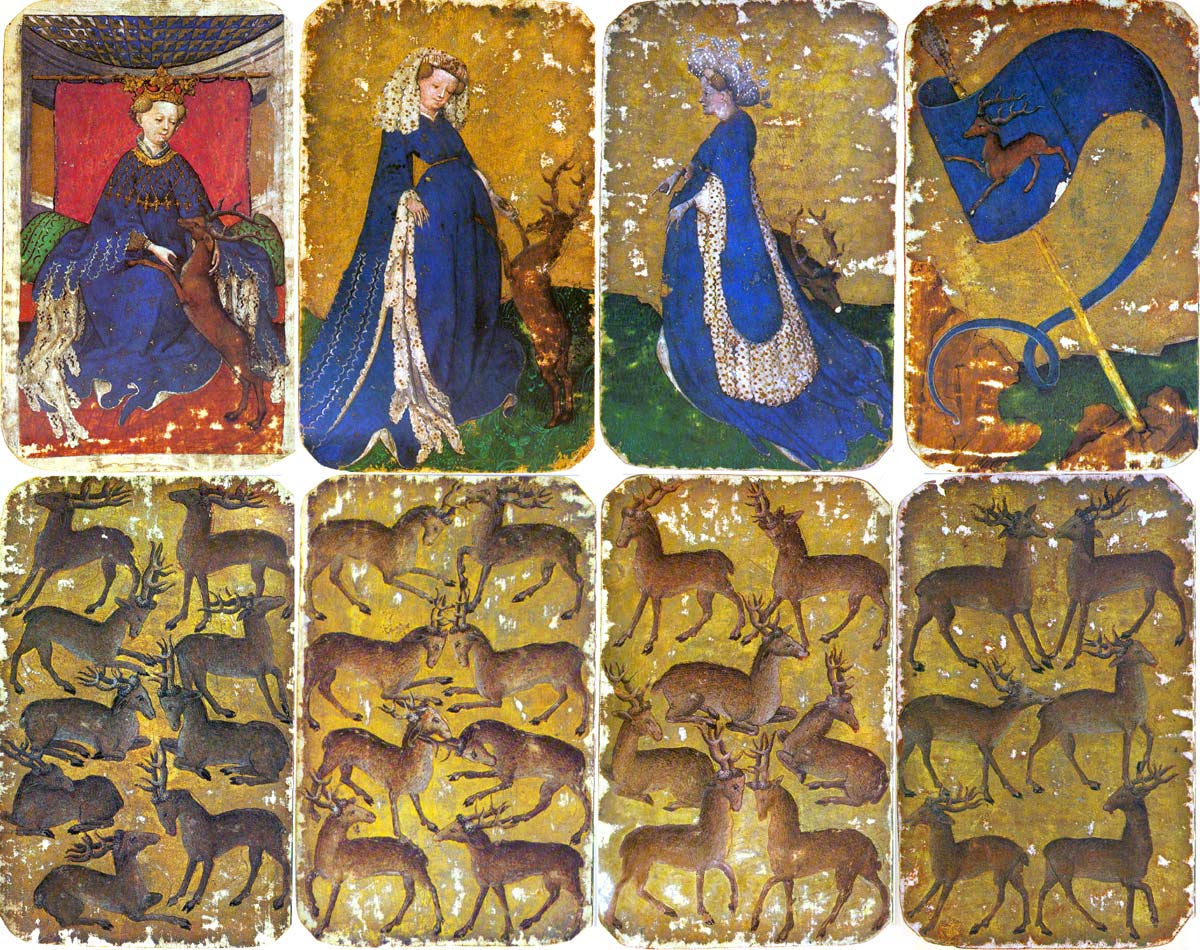
Above & Below: the pack originally contained 52 cards with suits of ducks, falcons, stags and hounds: the numeral cards (1 - 9 + banner card) with King, Knight and Knave for ducks and hawks, and female counterparts for stags and dogs. In the court cards the suit symbols are depicted in a harmonious relationship with the human figures: the artist has portrayed a somewhat idyllic lifestyle with close relationships between the figures and the animals.
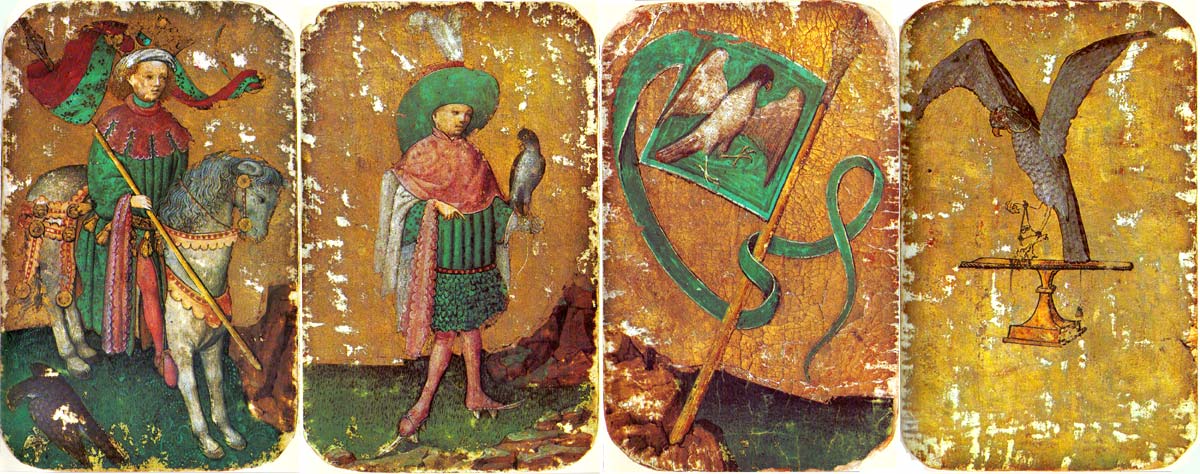
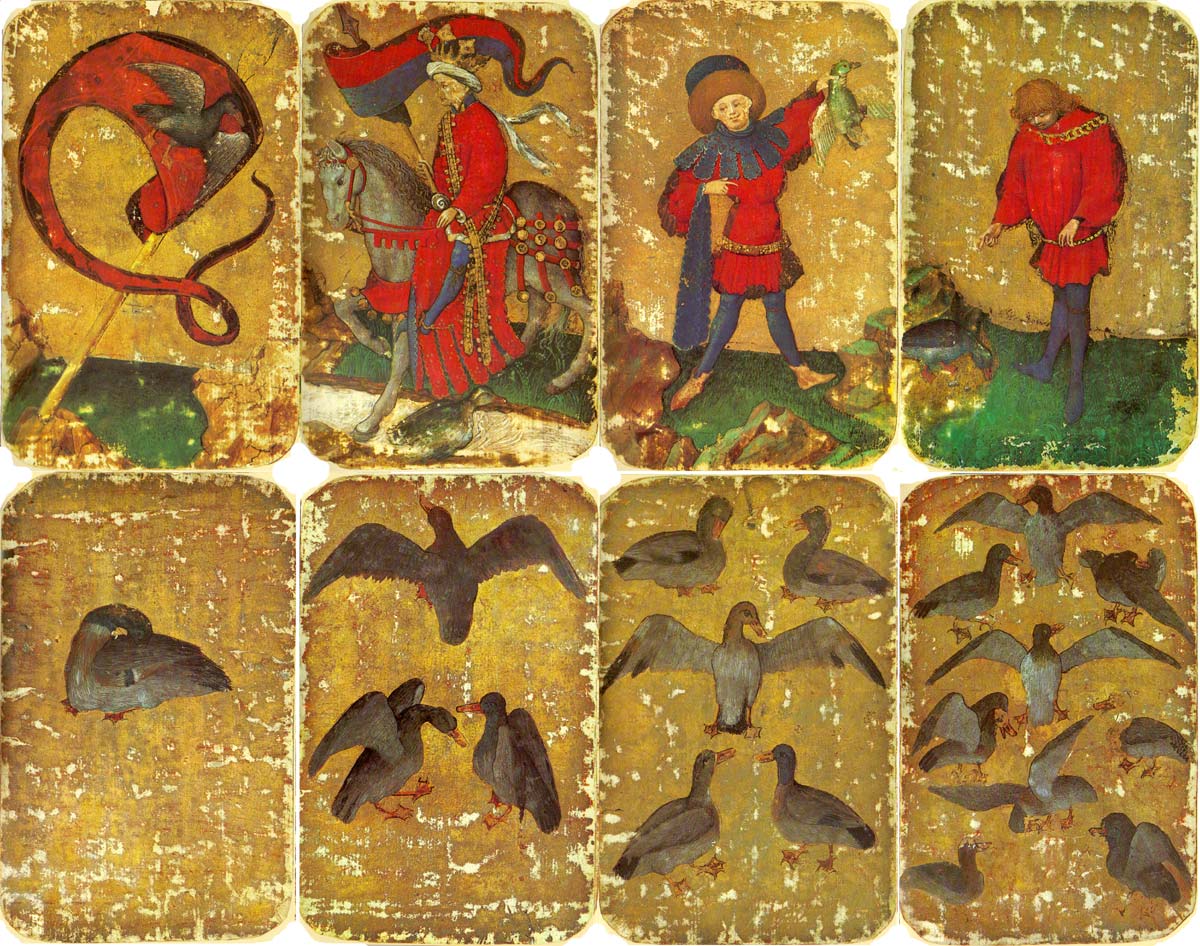
Above: the background landscape representations include details such as grass, water and cliff formations, with the court figures depicted in a natural habitat rather than in abstract space. The colour scheme is simple in that all the cards have a uniform gold background and the court cards are colour coded with their respective banner cards. The original cards are preserved in the Landesmuseum Württemberg.►
In the paint layers of the Stuttgarter Kartenspiel an impressive range of pigments has been detected: white lead, chalk, lead-tin yellow, yellow lake, green basic copper sulphate hydrate, copper green, azurite, vermilion, red lake, minium, charcoal black, and lamp black. A considerable variety of different metal applications results in the splendid appearance of the playing cards: poliment twist-gold, unpolished silver and gold leaf on a white ground, mordant gilding, gilding with mosaic gold, and glazing of twist-gold and mosaic gold with red lake have been observed.
These cards were made by an unknown workshop in southern Germany, possibly Swabia. The artist has chosen suit symbols and the court hierarchy in relation to the theme of the courtly hunt. Parallels with Italian hand-painted cards can be seen in the attitudes of the court cards and the narrow landscapes with grass, whilst similarities in the arrangement of the numeral cards can be noted in other early playing cards from Germany (e.g. Master of the Playing Cards).

REFERENCES
The 'Stuttgarter Kartenspiel': Scientific Examination of the Pigments and Paint Layers of Medieval Playing Cards, Ernst-Ludwig Richter and Heide Härlin, Studies in Conservation, Vol. 21, No. 1 (Feb., 1976), pp. 18-24.
Das Stuttgarter Kartenspiel: Introduction by Heribert Meurer, translated by George Brown, Württembergisches Landesmuseum, Stuttgart, 1979
Landesmuseum Württemberg: Stuttgarter Kartenspiel►

By Simon Wintle
Member since February 01, 1996
I am the founder of The World of Playing Cards (est. 1996), a website dedicated to the history, artistry and cultural significance of playing cards and tarot. Over the years I have researched various areas of the subject, acquired and traded collections and contributed as a committee member of the IPCS and graphics editor of The Playing-Card journal. Having lived in Chile, England, Wales, and now Spain, these experiences have shaped my work and passion for playing cards. Amongst my achievements is producing a limited-edition replica of a 17th-century English pack using woodblocks and stencils—a labour of love. Today, the World of Playing Cards is a global collaborative project, with my son Adam serving as the technical driving force behind its development. His innovative efforts have helped shape the site into the thriving hub it is today. You are warmly invited to become a contributor and share your enthusiasm.
Related Articles

CARD-AB Miltenberg
Illustrations by Rita Stern depicting notable landmarks and scenes from the town of Miltenberg in Ge...

New Altenburg Skat cards – German DDR Pattern
Authentic Altenburger Skat cards with German suits (Acorns, Hearts, Leaves, Bells).

German Travel Cards
A travel-themed educational deck helping American tourists visiting Germany.

French Revolutionary cards by Pinaut
Seven cards from a French Revolutionary pack by Pinaut featuring characters from classical antiquity...

Tarot de las Coscojas
Historical playing card design, tarot symbolism and an almost psychedelic medieval surrealism.

Briefmarken-Quartett
Quartet game featuring postage stamps from the Zones of Occupation in post-WWII Germany.

IG Chemie Papier Keramik
Promotional pack designed by Karl-Heinz Schroers for a German trade union with comical bears on the ...

Engel-Tarot
Set of major arcana designed by Alois Hanslian depicting angels throughout.

Virgil Solis
Remarkable pack of 52 animal-suited playing-cards designed and etched by Virgil Solis.

Victorian grocer’s scale plate
Large flat plate decorated with highly coloured English cards and royal arms.

Politiker-Skat by Bubec
Caricatures of world leaders, including many German politicians, by the artist Bubec.

Le Poker Politique
French politicians and various world leaders caricatured by the German artist Bubec.

Les Jeux de Pastor
Striking designs by Edouard Pastor focusing on the heads of figures from the medieval period.

Le Jeu des Personnages de l’Antiquité et du Moyen-Age
Edouard Pastor’s designs in black and gold inspired by Antiquity and the Middle Ages.

Rouen Pattern - Portrait Rouennais
An attractive XV century French-suited design from Rouen became the standard English & Anglo-America...

Heathen Divinities
Handmade playing cards from the British Museum depicting classical Greek and Roman gods and goddesse...
Most Popular
Our top articles from the past 28 days

